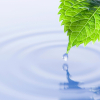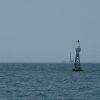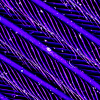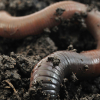Peter Weis
Bundeskriminalamt – KT 42, 65173 Wiesbaden, Germany. E-mail: [email protected]
Introduction: what makes glass important for forensic examinations?
Some people say that we live in the glass age, and there is a point to it, although it is equally true to say that we live in the plastic age, the silicon age or in the age of nano particles. However, our modern civilised world is loaded with glass objects—windows, bottles, doors, tableware, illuminants, decoration objects, touch screens and so on. Glass tends to get broken as a result of criminal activity—a perpetrator may break the glass of a window or a door in order to gain access to the place that will later be called a scene of crime, or a glass object, e.g. a broken bottle, may have been used as a weapon.
A combination of properties subsequently allows forensic examiners to use glass traces as evidence to establish a connection, e.g. between a scene of crime and a suspect. First, glass produces a considerable number of large to minute fragments when shattered. Second, small glass fragments tend to adhere to garments like the clothing of anyone standing close to the glass object while it breaks. Third, glass is a homogeneous material, which means that even microscopic fragments resemble, to a first approximation, the same chemical composition and intensive physical properties as the original glass object.
Forensic examination of glass traces
These three aspects would not be of much use if it was not for some sophisticated analytical methods capable of interrogating these miniscule pieces of evidence. The method that is most commonly used in forensic glass examinations is the determination of refractive index (RI). At first glance, this seems a bit incongruous, because more than 95% of the glass samples in case work are either container glass or float glass, both of which are soda-lime-glass, and have an RI between 1.510 and 1.530.
Therefore, a sophisticated method to determine the RI of glass samples with diameters of the order of some 0.1 mm or even smaller with very good precision and accuracy was developed, which is described in ASTM E1967 – 11a (Standard Test Method for the Automated Determination of Refractive Index of Glass Samples Using the Oil Immersion Method and a Phase Contrast Microscope).
A glass fragment is placed onto a microscope glass slide and immersed in silicone oil. The temperature of the oil and the glass fragment are automatically altered using a heating stage, which itself is mounted in a phase contrast microscope, illuminated with monochromatic light at 589 nm. The RI of the immersion oil changes with temperature to a much larger extent than the RI of the glass. At the “match temperature” the RIs of glass and oil are equal, and at this point, the glass fragment is nearly invisible in the phase contrast microscope. This temperature can be detected with high precision and translated into RI values using a calibration curve.
Measurement precisions in the order of 1–3 × 10–5 can be achieved, while the RI variations within a window pane are normally in the order of 1–2 × 10–4. Therefore, this method can be used to discriminate between different soda-lime-glass sources. Unfortunately, a probability of several percent remains that two randomly chosen soda-lime glass samples from different sources cannot be discriminated based on their refractive indices.
This is one reason why forensic glass examiners developed additional methods to further increase the evidential value of glass comparison analyses. One possibility is to measure the refractive indices not only at 589 nm, but also at one or two other wavelengths (e.g. 486 nm and/or 656 nm).
Another possibility is to reanneal the glass samples by heating them to ~550–600°C and allow them to cool down slowly using an oven with a controlled temperature program, thereby removing thermal stress from the glass samples, and measuring the RI again after this process. The difference between the refractive indices before and after the re-annealing process (Delta RI) provides information about the thermal history of the glass, i.e. large Delta RI values indicate that the glass was thermally toughened (security glass), while smaller Delta RI values indicate that the glass originates, e.g., from a glass bottle or a non-toughened window.
Further methods focusing on the physical properties of the bulk material are density measurements and colour determinations. If recovered particles exhibit original surfaces, additional methods for examining the surface structure and curvature, and functional layers may be applied. In addition to these methods, the chemical composition of the glass samples can be utilised to compare glass fragments. The most frequently used techniques in this context are scanning electron microscopy/energy dispersive X-ray spectrometry (SEM/EDX), micro X-ray fluorescence (µXRF) and laser ablation inductively coupled plasma mass spectrometry (LA-ICP-MS).
Advantages of LA-ICP-MS
While µXRF and especially SEM/EDX are limited to the analysis of major, minor and only few trace elements, LA-ICP-MS provides enough sensitivity and linear range to enable the determination of trace and ultra-trace elements (limits of quantification are in the ng g–1 range for many elements) while determining main and minor element concentrations during the same measurement. This is important when comparing float glass samples, because the manufacturers control the main and minor elements very strictly, while the trace and ultra-trace elements are not added to the glass on purpose, but as contaminations in the raw materials.
Therefore, the discriminative power of chemical analysis using LA-ICP-MS is much better than using SEM/EDX or µXRF. Furthermore, irregularly shaped and contaminated surfaces do not compromise the measurements.
LA-ICP-MS glass analysis at the Bundeskriminalamt—a short history
At the Bundeskriminalamt (BKA), the potential of LA-ICP-MS for forensic glass comparisons was recognised at an early stage.1 A quadrupole ICP-MS instrument was installed in 1993, and the first ultraviolet-LA Instrument (266 nm) in 1998. This combination of instruments was later replaced by more robust, reliable and sensitive successors (193 nm and 213 nm laser ablation microprobes, quadrupole ICP-MS spectrometers).
In addition to internal research activities, the Bundeskriminalamt was and is engaged in international networks promoting the application of LA-ICP-MS in forensic glass casework.
Within the EU-funded NITECRIME network (2001–2004; natural isotopes and trace elements in criminalistics and environmental forensics), a standard method for the quantitative determination of elements in float glass samples by LA-ICP-MS was developed together with research institutes and law enforcement agencies in Europe, Australia and North America. Within several collaborative exercises, it was proven that accurate, precise and robust elemental data could be obtained from different laboratories around the world using widely differing LA-ICP-MS instrumentation. Two dedicated, matrix-matched glass standards (FGS 1 and FGS 2) were developed in cooperation between the Bundeskriminalamt and Schott AG in order to improve the accuracy and precision of forensic glass analyses.2
Between 2008 and 2011, the project “elemental analysis of forensic evidence: workshop and working group” (EAWG), funded by the United States National Institute of Justice (NIJ) focused on the cross-validation and evaluation of the performance of µXRF, ICP-MS and LA-ICP-MS for the elemental analysis of glass3 and on the evaluation of the performance of different exclusion criteria.4 The work of this group also led to the publication of ASTM E292613 [Standard Test Method for Forensic Comparison of Glass Using Micro X-ray Fluorescence (µ-XRF) Spectrometry] and ASTM E292713 (Standard Test Method for Determination of Trace Elements in Soda-Lime Glass Samples Using Laser Ablation Inductively Coupled Plasma Mass Spectrometry for Forensic Comparisons).
A successor group started to work on the follow-up project “Strengthening the evaluation and interpretation of glass evidence using statistical analysis of collection sets and databases of refractive indices and elemental data (µXRF, ICP-MS and LA-ICP-MS)” in 2016.
False positive and false negative results, exclusion criteria and evidential value
After the application to a few cases between 2001 and 2004, the LA-ICP-MS method was included in routine glass casework at the BKA in 2005. In this context it was important to implement a robust exclusion criterion. To this end, two sample sets were analysed— a set of 62 float glass samples from different sources and 34 fragments (44 data sets) from the same glass pane. Possible exclusion criteria were evaluated to minimise false positive results for samples from different sources and to minimise false negative results for data from the same source.5 A modified four sigma criterion was chosen for casework, which resulted in two false positive results in 1891 pairwise comparisons (error rate 0.11%) and 10 false negative results in 946 pairwise comparisons (error rate 1.06%).
Since 2005, the results from LA-ICP-MS analyses of control samples and non-matching recovered samples were collected, totalling 398 samples. We recognised 26 random matches in 79,003 pairwise comparisons, corresponding to an error rate of 0.033%. The difference to the test data set can be easily explained by the fact that this data collection from casework consists of various kinds of glass (float glass, container glass, non-float flat glass, specialty and household glass etc.) while the test data set is much more homogeneous and consists only of float glass samples.
Casework example 1: comparison analysis
The majority of glass cases are comparisons between samples from a known source related to the crime and samples that are related to a suspect.
A security van was stopped by a car. Two masked and armed men broke the windows of the transporter, put the driver in chains, stole the money from the back of the van and drove away with the car. The driver of the van remembered the brand, model and colour of the vehicle and suspected that it was a rental car.
The police then asked car rentals close to the incident whether they owned such a car, and found a suspect vehicle. When inspecting the car, a police officer found glass fragments in the profile of a tyre, and sent these to the laboratory together with fragments from the van’s broken window. The examinations revealed that both glass sources could not be distinguished by RI measurements or by elemental analysis using LA-ICP-MS. Therefore, a possible connection between the scene of crime and the car could be established, and the person that rented this car on the respective day was confronted with these results.
Casework example 2: classification of a glass sample
Questions concerning the classification of glass samples are less common, but are often interesting cases which involve some seldom used examination methods.
During the autopsy of a victim that had been murdered by a gun shot, a glass fragment was found within the dead body. The fragment was sent to our lab and we were asked from which object the fragment could have originated (Figure 1).

Figure 1. Glass fragment, side view (left) and coating (right).
Refractive index measurements before and after re-annealing revealed a large Delta RI, indicating that the exhibit was thermally toughened glass, probably a security glass. Quantitative elemental analysis utilising LA-ICP-MS showed that the fragment has a composition that is in good agreement with other float glass samples. Figure 2 depicts the results of the analysis of the sample in question, of 20 container glass samples and of 62 float glass samples (lead concentration vs the quotient calcium concentration/magnesium concentration6).

Figure 2. Pb, Ca and Mg concentrations of float glass, container glass and the unknown sample.
The glass fragment was coated with dark enamel on one side. Examinations with SEM/EDX revealed that the coating contains, among others, the elements lead, chromium, cobalt and copper. Similar compositions are known to be used for car windows, nearly exclusively for non-retractable windows (front and rear windows, triangular windows at the sides of the car etc.).

Figure 3. SEM/EDX spectrum of the enamel coating.
With the glass fragment including the original surfaces, it was possible to reconstruct the curvature of the original glass object by interference microscopy. A beam of monochromic light is divided by a semi-transparent mirror. One beam is reflected at the original surface of the glass fragment and the other at a very flat reference surface. The two beams are then recombined, resulting in an interference pattern that reveals the form of the original surface—flat glass results in straight, parallel interference lines, a light curvature results in slightly curved interference lines, and strongly bent glass surfaces (e.g., bottle fragments) result in a strong curvature of the interference lines.

Figure 4. Interference lines of a slightly curved car side window (left) and a flat glass (right).
The interference pattern received from the glass fragment in question showed light curvature, as would, e.g., be expected for a window of a car.
The results of the examinations indicate that the glass fragment from the body of the victim probably originated from the rear window or from a stationary (non-retractable) side window of a car. Since the fragment was found inside the body of the victim, the deadly shot was probably fired through such a car window.
Current and future developments
The application of LA-ICP-MS analysis is at present limited by the minimal required size dimensions of at least 0.4 mm in diameter and 0.1 mm in thickness, although many recovered fragments in casework are smaller and can therefore only be examined by less discriminating methods. Improved instrumentation like faster (e.g., time of flight, TOF) or more sensitive (e.g., sector field) ICP-MS instruments, laser ablation instruments with pulse durations in the femtosecond instead of the nanosecond range, and adopted analytical methods will enable the examination of smaller samples.
The interpretation of the results especially from elemental analysis data may be improved, i.e. by increasing the database on which these interpretations are founded and by employing more sophisticated statistical models.
References
- W. Stöcklein, E. Kubassek, R. Fischer and A. Chadzelek, “The forensic analysis of float-glass characterization of glasses from international sources”, ENFSI EPG Newsletter 3, 8 (2009). doi: http://dx.doi.org/10.13140/RG.2.1.3294.3763
- C. Latkoczy, S. Becker, M. Dücking, D. Günther, J. Hoogewerff, J. Almirall, J. Buscaglia, A. Dobney, R. Koons, S. Montero, G. van der Peijl, W. Stoecklein, T. Trejos, J. Watling and V. Zdanowicz, “Development and evaluation of a standard method for the quantitative determination of elements in float glass samples by LA-ICP-MS”, J. Forensic Sci. 50(6), 1327 (2005). doi: http://dx.doi.org/10.1520/JFS2005091
- T. Trejos, R. Koons, S. Becker, T. Berman, J. Buscaglia, M. Duecking, T. Eckert-Lumsdon, T. Ernst, C. Hanlon, A. Heydon, K. Mooney, R. Nelson, K. Olsson, C. Palenik, E.C. Pollock, D. Rudell, S. Ryland, A. Tarifa, M. Valadez, P. Weis and J. Almirall, “Cross-validation and evaluation of the performance of methods for the elemental analysis of forensic glass by µ-XRF, ICP-MS, and LA-ICP-MS”, Anal. Bioanal. Chem. 405, 5393 (2013). doi: http://dx.doi.org/10.1007/s00216-013-6978-y
- T. Trejos, R. Koons, P. Weis, S. Becker, T. Berman, C. Dalpe, M. Duecking, J. Buscaglia, T. Eckert-Lumsdon, T. Ernst, C. Hanlon, A. Heydon, K. Mooney, R. Nelson, K. Olsson, E. Schenk, C. Palenik, E.C. Pollock, D. Rudell, S. Ryland, A. Tarifa, M. Valadez, A. van Es, V. Zdanowiczq and J. Almirall, “Forensic analysis of glass by µ-XRF, SN-ICP-MS, LA-ICP-MS and LA-ICP-OES: evaluation of the performance of different criteria for comparing elemental composition”, J. Anal. At. Spectrom. 28, 1270 (2013). doi: http://dx.doi.org/10.1039/c3ja50128k
- P. Weis, M. Dücking, P. Watzke, S. Menges and S. Becker, “Establishing a match criterion in forensic comparison analysis of float glass using laser ablation inductively coupled plasma mass spectrometry”, J. Anal. At. Spectrom. 26, 1273 (2011). doi: http://dx.doi.org/10.1039/c0ja00168f
- P. Weis, M. Dücking, P. Watzke and S. Becker, “Discrimination of float and container glasses by elemental analysis using laser ablation inductively coupled plasma mass spectrometry (LA-ICP-MS) “, ENFSI EPG Newsletter 1, 18 (2007). doi: http://dx.doi.org/10.13140/RG.2.1.2376.8722










